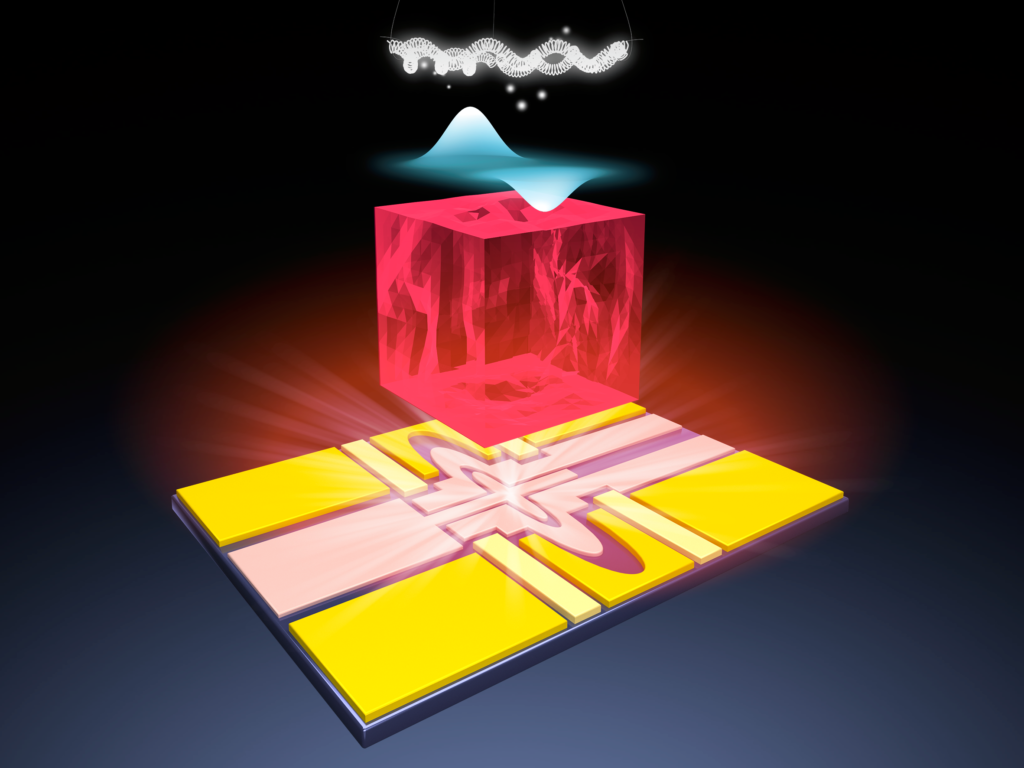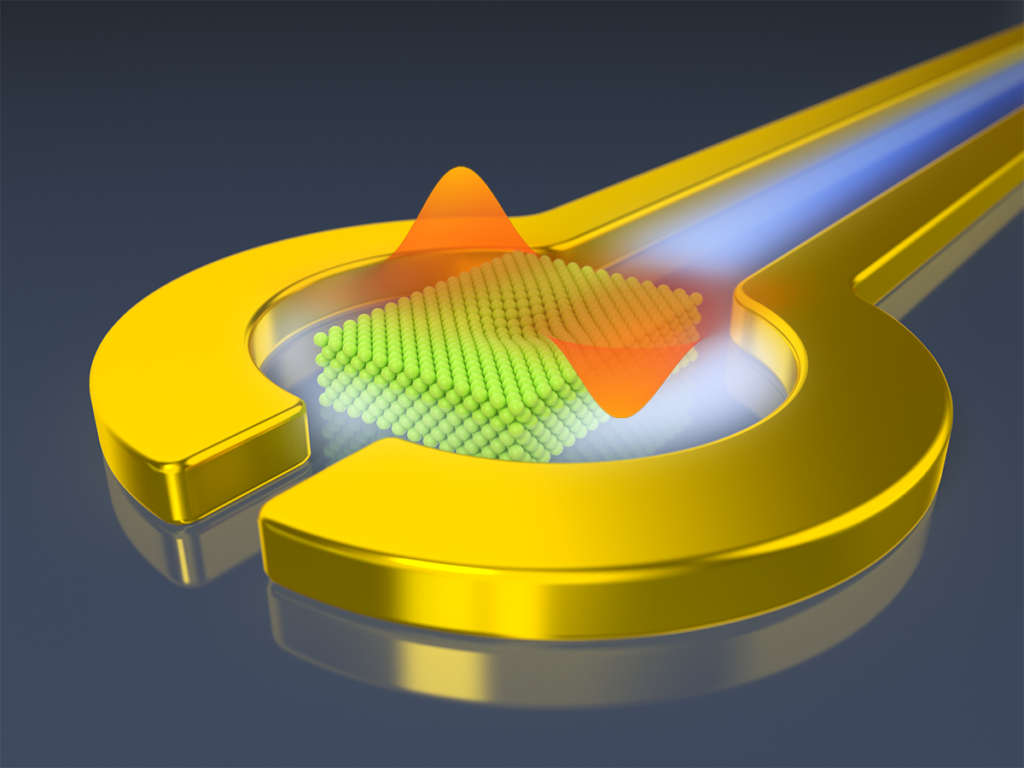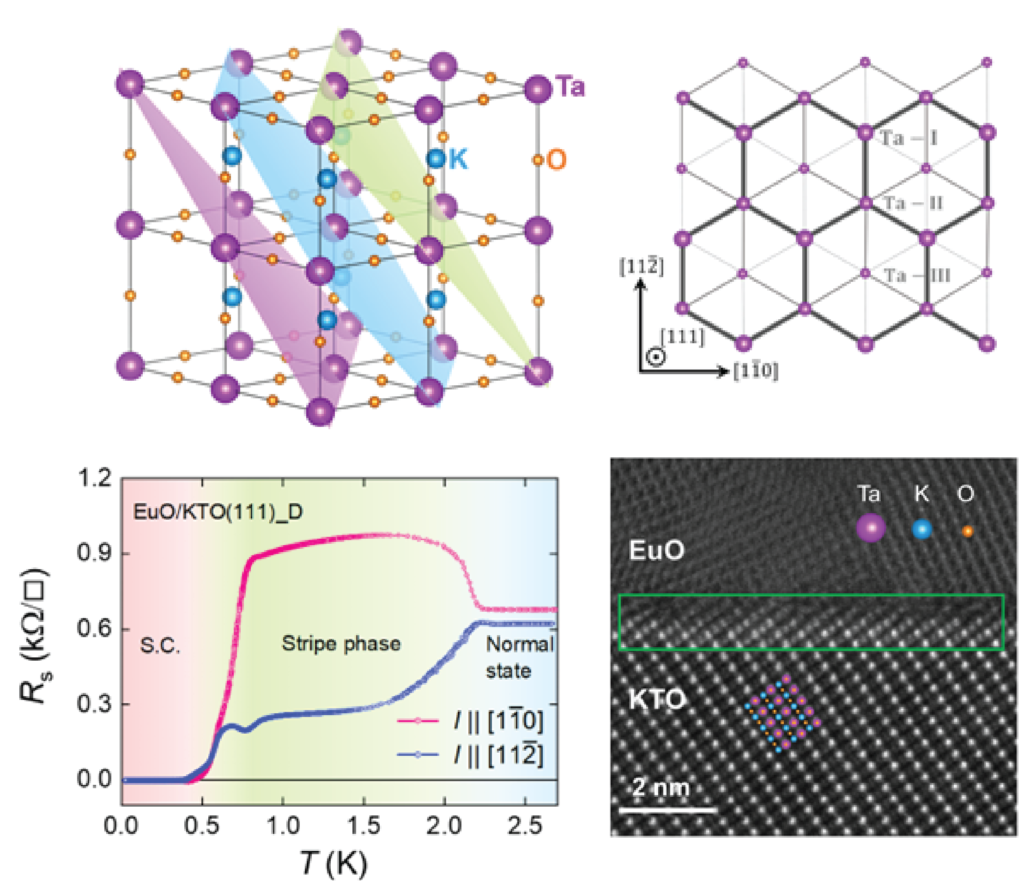Overview

We are broadly interested in any quantum materials and devices in both equilibrium and nonequilibrium states.
- Quantum Materials: we are particularly interested in strongly correlated quantum liquid and solid systems, such as superfluid helium 3 and helium 4, solid hydrogen and neon, high temperature superconductors, topological superconductors, fractional quantum Hall liquids, and quantum spin liquids.
- Quantum Devices: we are particularly interested in highly integrated quantum electronic and photonic systems, such as single-electron-based quantum processors, single-ion-based quantum transducers, and single-photon-based quantum sensors.
Quantum Information with Electrons on Solid Neon

Progress towards the realization of quantum computers requires persistent advances in their constituent building blocks—qubits. Novel qubit platforms that simultaneously embody long coherence, fast operation and large scalability offer compelling advantages in the construction of quantum computers and many other quantum information systems. Electrons, ubiquitous elementary particles of non-zero charge, spin and mass, have commonly been perceived as paradigmatic local quantum information carriers. Despite superior controllability and configurability, their practical performance as qubits through either motional or spin states depends critically on their material environment. Recently, we experimentally realized a new qubit platform based on isolated single electrons trapped on an ultraclean solid neon surface in vacuum. By integrating an electron trap in a circuit quantum electrodynamics architecture, we achieved strong coupling between the motional states of a single electron and a single microwave photon in an on-chip superconducting resonator [1]. Qubit gate operations and dispersive readout were successfully implemented. Our latest measurements show that both the relaxation time T1 and coherence time T2 have reached 100-microsecond scale [2]. The observed single-shot readout fidelity, without using a quantum-limited amplifier, is already 94.4%. Simultaneous strong coupling of two qubits with the microwave resonator is also demonstrated, as a first step toward two-qubit entangling gates for universal quantum computing. These results manifest that the electron-on-solid-neon (eNe) charge qubits have outperformed all the existing charge qubits to date and rivaled the state-of-the-art superconducting transmon qubits.
[1] X. Zhou, G. Koolstra, X. Zhang, G. Yang, X. Han, B. Dizdar, X. Li, R. Divan, W. Guo, K. W. Murch, D. I. Schuster, and D. Jin, “Single electrons on solid neon as a solid-state qubit platform”, Nature 605, 46–50 (2022).
[2] X. Zhou, X. Li, Q. Chen, G. Koolstra, B. Dizdar, X. Han, X. Zhang, D. I. Schuster, and D. Jin, “Electron charge qubits on solid neon with 0.1 millisecond coherence time”, arXiv (2022).
For more news release, please see:
https://www.anl.gov/article/the-quest-for-an-ideal-quantum-bit
https://spectrum.ieee.org/neon-qubit
https://www.azoquantum.com/Article.aspx?ArticleID=339
Superconducting Space-time Crystal

In recent years, the notion of a space-time crystal (STC) has attracted a great deal of attention. While there has been considerable discussion about what is truly outstanding in such a system, at present, it is mostly agreed that the STC refers to a nonequilibrium phase of matter displaying long-range order in both space and time. Specifically, the (nonlinear) many-body interaction makes the system exhibit long-lived oscillations at a period longer than the period of the driving source, and the oscillation patterns show rigidity against perturbation from the environment. We have shown theoretically that the high-critical-temperature superconductor BSCCO is a natural candidate for the recently envisioned classical space-time crystal [1]. BSCCO intrinsically forms a stack of Josephson junctions. Under a periodic parametric modulation of the Josephson critical current density, the Josephson currents develop coupled space-time crystalline order, breaking the continuous translational symmetry in both space and time. The modulation frequency and amplitude span a (nonequilibrium) phase diagram for a so-defined spatiotemporal order parameter, which displays rigid pattern formation within a particular region of the phase diagram. Based on our calculations using representative material properties, we propose a laser-modulation experiment to realize the predicted space-time crystalline behavior. Our findings bring new insight into the nature of space-time crystals and, more generally, into nonequilibrium driven condensed matter systems.
[1] R. Kleiner, X. Zhou, E. Dorsch, X. Zhang, D. Koelle, and D. Jin, “Space-time crystalline order of a high-critical-temperature superconductor with intrinsic Josephson junctions”, Nat. Commun. 12, 6038 (2021).
Anisotropic Interfacial Superconductivity

The distinctive electronic structure found at interfaces between materials can allow unconventional quantum states to emerge. Collaborating with Dr. Anand Bhattacharya’s team at Argonne National Laboratory, we discovered an exotic superconductivity in the electron gases formed at interfaces between (111)-oriented KTaO3 and insulating overlayers of either EuO or LaAlO3 [1]. The superconducting transition temperature, as high as 2.2K, is about one order of magnitude higher than that of the LaAlO3/SrTiO3 system. Notably, similar electron gases at KTaO3 (001) interfaces remain normal down to 25mK. The critical field and current-voltage measurements indicate that the superconductivity is two-dimensional. In EuO/KTaO3 (111) samples, a spontaneous in-plane transport anisotropy is observed before the onset of superconductivity, suggesting the emergence of a distinct stripe-like phase, which is also revealed near the critical field.
[1] C. Liu, X. Yan, D. Jin, Y. Ma, H.-W. Hsiao, Y. Lin, T. M. Bretz-Sullivan, X. Zhou, J. Pearson, B. Fisher, J. S.l Jiang, W. Han, J.-M. Zuo, J. Wen, D. D. Fong, J. Sun, H. Zhou, and A. Bhattacharya, “Two-dimensional superconductivity and anisotropic transport at KTaO3 (111) interfaces”, Science 371, 716−721 (2021).
